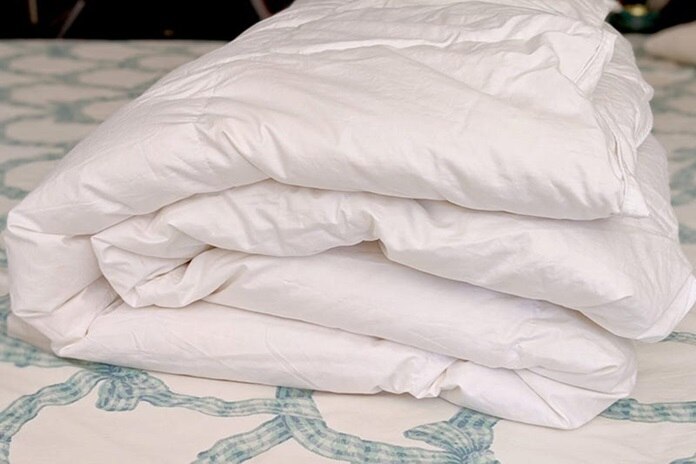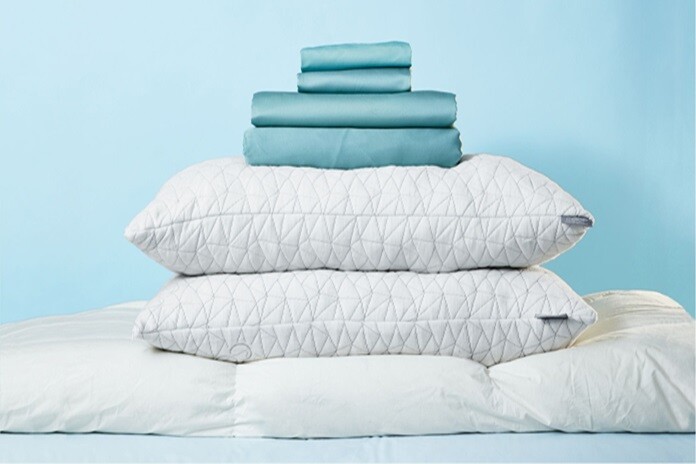Taking proper care of your comforter and storing it correctly is crucial to maintain its quality and lengthen its lifespan. Your comforter is not just another household object, it’s an investment in your comfort and warmth. You need special care to preserve your comforter’s fluffiness and cleanliness without harming its fabric, filling, and stitching. Your comforter can make a difference when going between seasons and when you want to refresh your bedding.
Importance of Comforter Storage
Proper storage is important for several reasons including storing your comforter properly. Using the correct method can help extend its lifespan and you can enjoy the benefits of your investment for many years. Comforters are often a powerful investment in cost and time expended choosing the right one.
Protection Against Damage
- Protecting Against Insects: Natural fibers are at risk of damage from moths and other insects, while dust mites can collect and cause allergies.
- Guarding Against Mold: Storing your comforter in damp areas can lead to the growth of mold, which can be very difficult to remove.
- Avoiding Unpleasant Odors: Fabric tends to absorb odors from its surroundings, so store your comforter in a clean and well-ventilated area.
Preserving Quality
- Avoiding Compression: Long compression can harm the filling of your comforter, reducing its thickness and warmth.
- Ensuring Breathability: Using breathable storage bags can help the material maintain its quality and prevent the fibers from spoiling.
Convenient Storage
- Easy Access: You should be able to easily retrieve your comforter during seasonal changes without rummaging through poorly stored items.
- Space Efficiency: Proper storage techniques maximize space, allowing for better organization in your storage areas.
Cleaning Your Comforter

It’s important to make sure your comforter is clean. Dirt, oils, and other grime can become deeply embedded in the fabric over time, making it harder to clean and potentially causing damage.
To maintain your comforter’s freshness, start by washing it as instructed on the care label.
For machine wash: Use a mild detergent and select a gentle cycle with warm water. If possible, rinse it twice to remove all soap remains.
For dry-clean-only: Take it to a professional cleaner who has experience with bedding. Make sure they are aware of any specific care symbols on the comforter’s label.
Allow your comforter to air dry thoroughly or use a dryer on a low heat setting if the care instructions permit. Complete drying is essential to prevent mold and mildew growth during storage.
Drying Your Comforter

After washing your comforter, it’s essential to ensure that it’s completely dry before storing it. Even a small amount of moisture can lead to the growth of mold, potentially causing damage to your comforter.
Here are the steps to dry your comforter:
- First, gently press out any excess water, being careful not to wring or twist the fabric as this can damage the fill.
- If you’re using a machine dryer, opt for a large-capacity dryer on a low heat setting. Consider adding dryer balls or clean tennis balls to help fluff the comforter and prevent clumping.
- If a dryer isn’t available, lay the comforter flat on a clean surface, preferably outdoors on a sunny day, and remember to turn it occasionally to ensure even drying.
- Always check that the comforter is completely dry, paying extra attention to the middle layers, which usually take the longest to dry.
- Finally, avoid prolonged exposure to direct sunlight, as this can lead to fabric damage and fading.
Choosing and Organizing Storage Space

When storing your comforter, it is crucial to select the right container. Always ensure that the container is clean and dry before placing your comforter inside to maintain its quality. It’s important to weigh the pros and cons of using bags, boxes, and vacuum sealing.
- Bags: Plastic bags shield against dust but may not be as effective against moisture and pests unless tightly sealed and Fabric bags allow for breathability, reducing the risk of mold.
- Boxes: Cardboard boxes are a popular choice as they offer a sturdy structure for easy stacking. They may expose your comforter to moisture or pests.
- Vacuum sealing: This method reduces the required storage space and shields your comforter from moisture, dust, and pests but vacuum sealing may flatten the loft of the filling.
Before storing your comforter, make sure that the space is clean and dry to prevent mold. Follow these guidelines:
- Select the right location: Choose a cool, dark, and well-ventilated area to help preserve the materials of the comforter.
- Clean the area: Wipe shelves or containers with a damp cloth and mild detergent, and then dry thoroughly.
- Check for pests: Confirm that no insects can access the storage space.
Properly Folding and Positioning Your Comforter

Start by laying it out flat on a clean surface, such as a bed or the floor. First, fold it in half lengthwise, then fold it in half widthwise. It’s important to confirm that your folds are neat and even to minimize wrinkles and make use of storage space. When placing the folded comforter into a storage bag or container, gently press down to remove excess air. Store the comforter on top of other linens in the storage space, taking care not to crush it, to help maintain its shape and structure.
Additional Tips: Avoiding Moisture, Pest, and Odor
While storing your comforter, it’s important to protect it from moisture, pest, and odor.
- Moisture: Use a dehumidifier where you store a comforter to absorb excess moisture.
- Pests: Place a lavender sachet in between the comforter, it’s a natural repellent that prevents moths and pests from coming.
- Odor: Make sure the container you store in allows air circulation which helps it prevent musty smells. Also, use a fabric softener or baking soda before storing.
It’s incredibly important to store your comforter properly to preserve its quality and longevity. To achieve this, it’s essential to adhere to the best cleaning practices, make sure the comforter is thoroughly dried, use breathable storage bags, include desiccants to absorb moisture and store it in a cool, dry location. By being attentive to these details, you can shield your comforter from damage, maintain its fluffiness, and prolong its lifespan. Always bear in mind that the care you provide today will directly impact the comforter’s ability to continue providing warmth and comfort night after night. Following these guidelines will guarantee a cozy and long-lasting sleeping experience.
FAQ
Why should you store your comforter properly?
Storing your comforter properly can prevent moisture, mold, and odors, as well as its quality and longevity.
How to clean your comforter?
To clean your comforter you must follow the label as instructed in it’s label and maintain its freshness and prevent damage.
How to choose the correct storage container?
Choosing a breathable fabric bag, clean box, or vacuum sealing is best for storage.
How to store your comforter?
Fold neatly, and store in a clean, dry, and ventilated space.
How do you prevent moisture, pests, and odors?
Use dehumidifiers, and natural repellents like lavender sachets, and confirm good air circulation in storage areas.
Also, read more about Explore The Benefits and Considerations of Sleeping Naked.
